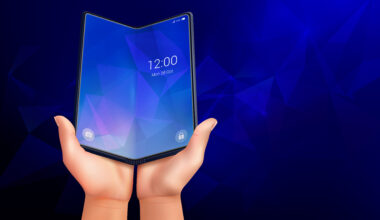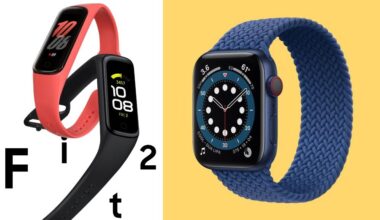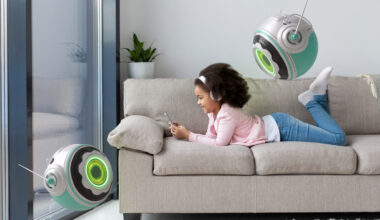Smartwatches have ruled the wearable tech scene for nearly a decade—tracking our heart rates, counting our steps, and keeping us connected with a flick of the wrist. But as 2025 unfolds, wearable technology is evolving far beyond the smartwatch. From smart rings to brain-computer interfaces, the next wave of wearables promises to be more invisible, intelligent, and integrated into our daily lives.
Here’s a look at the emerging trends shaping the future of wearables and what you can expect after smartwatches.
1. Smart Rings: Tiny Powerhouses
Smart rings are quickly becoming the next big thing in personal tech. Unlike bulky watches, these discreet accessories pack powerful features:
-
Health tracking: Rings like the Oura Ring Gen3 and Samsung Galaxy Ring (2025) monitor heart rate, sleep quality, and even stress levels.
-
Payments & security: NFC-enabled rings let you tap to pay or unlock doors without pulling out a phone.
-
Always-on convenience: Their small size and long battery life (often a week or more) make them ideal for 24/7 wear.
Why it matters: Smart rings give all the key benefits of a smartwatch—without the screen or bulk.
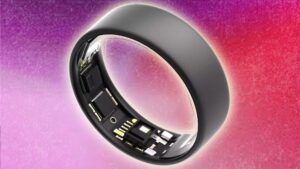
2. Smart Glasses and AR Eyewear
Augmented Reality (AR) is moving from niche gaming into everyday life:
-
Apple Vision Pro Lite and Meta Ray-Ban Stories 2 offer lightweight designs with heads-up notifications, navigation overlays, and real-time translations.
-
Enterprise use: Companies use AR glasses for remote training, field repairs, and interactive presentations.
Trend to watch: As AR hardware shrinks and display clarity improves, smart glasses will become as common as Bluetooth earbuds.
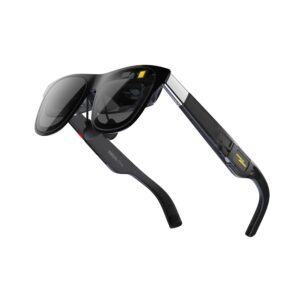
3. Next-Level Health Sensors
Wearables are turning into medical-grade health companions:
-
Continuous glucose monitoring (CGM) without finger pricks—like Abbott’s Lingo or Dexcom Stelo—is becoming mainstream.
-
Non-invasive blood pressure and hydration sensors help athletes and patients track health in real time.
-
AI-driven analytics will predict health issues before symptoms show.
Why it matters: The future of wearables is about preventive healthcare, not just fitness.

4. Brain-Computer Interfaces (BCI) & Neurotech
We’re entering the era of mind-controlled technology:
-
Companies like Neuralink and NextMind are exploring devices that interpret brain signals to control computers, play games, or assist people with disabilities.
-
Early consumer versions may enable hands-free typing or immersive VR experiences.
Caution: Ethical and privacy concerns will grow as this tech becomes more accessible.

5. Smart Clothing & E-Textiles
Clothing is becoming the ultimate wearable:
-
Sports apparel with built-in biometric sensors to monitor muscle activity and hydration.
-
Heated jackets and climate-adaptive fabrics for personalized temperature control.
-
Fashion-tech collaborations blending style with functionality.
Example: Companies like Hexoskin and Under Armour are embedding sensors directly into fabrics.
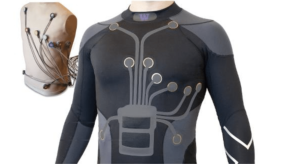
6. AI-Powered Earbuds (“Hearables”)
Earbuds are evolving from simple audio devices into always-on personal assistants:
-
Real-time language translation (like in the latest Google Pixel Buds)
-
Health monitoring through inner-ear sensors (heart rate, temperature).
-
Context-aware voice assistants that anticipate user needs.
Why it matters: Hearables will be our gateway to AI-driven personal computing.

7. Implantable Tech
Still in early stages, but coming:
-
Medical implants for real-time monitoring of chronic conditions.
-
Digital IDs or payment chips beneath the skin for seamless authentication.
Privacy alert: This raises serious debates around consent and data security.
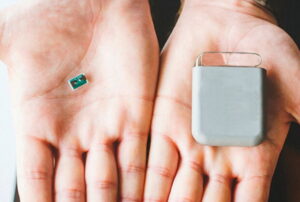
8. Sustainable & Energy-Harvesting Wearables
Future wearables will power themselves:
-
Solar-powered fabrics and kinetic energy harvesting mean no more frequent charging.
-
Eco-friendly materials will reduce environmental impact.
Preparing for the Next Wave
For consumers:
-
Expect smaller, more discreet devices that integrate seamlessly into daily life.
-
Privacy and data security will be critical; choose brands with strong protections.
For businesses & developers:
-
Think beyond screens—design for voice, gesture, and biometrics.
-
Build applications that merge health, AI, and real-world utility.
Final Thoughts
Smartwatches opened the door to personal technology, but the next generation of wearables will disappear into our clothes, ears, and even our bodies.
From smart rings to neurotech interfaces, wearable tech in 2025 and beyond isn’t just about convenience—it’s about creating a more connected, health-conscious, and intelligent world.
The question isn’t whether we’ll move beyond smartwatches. It’s how soon we’ll embrace technology that we can’t even see.


